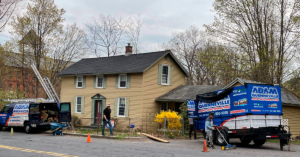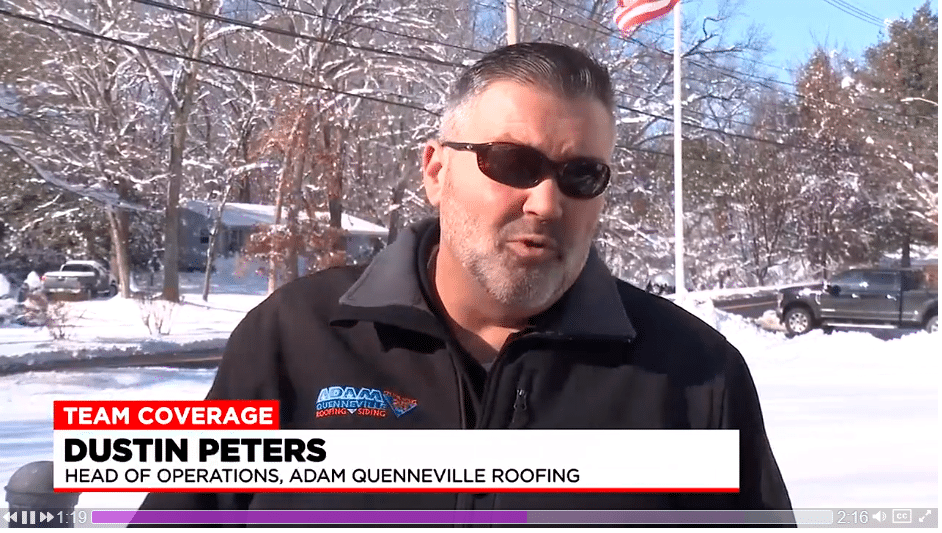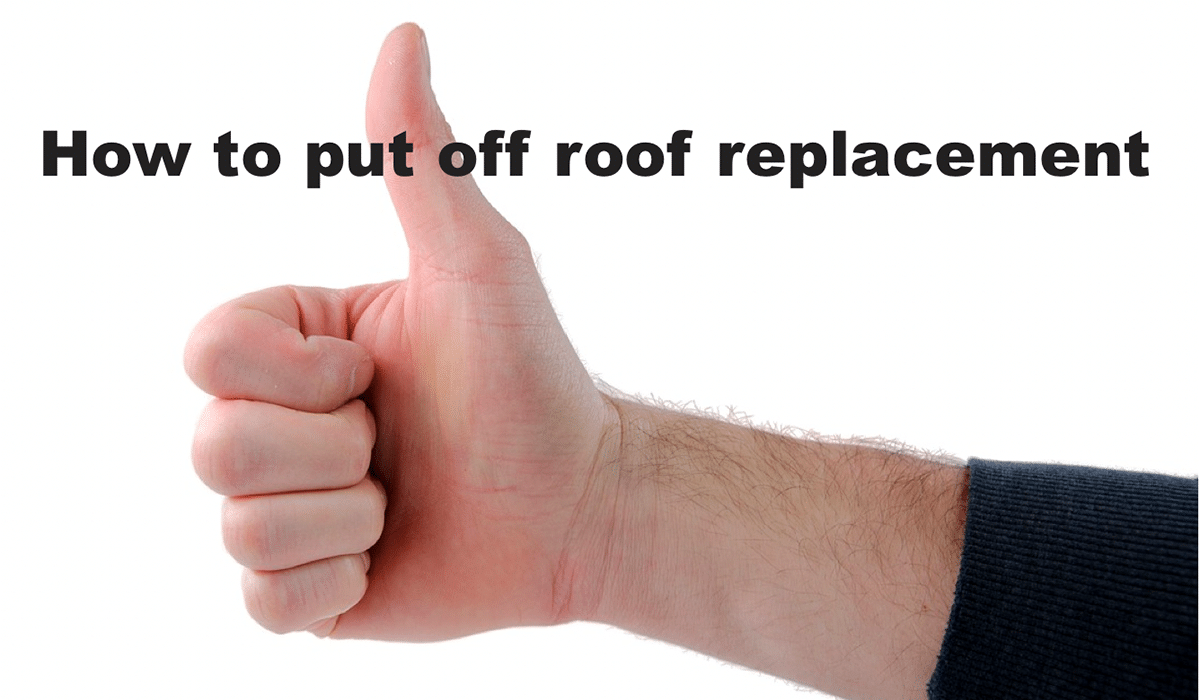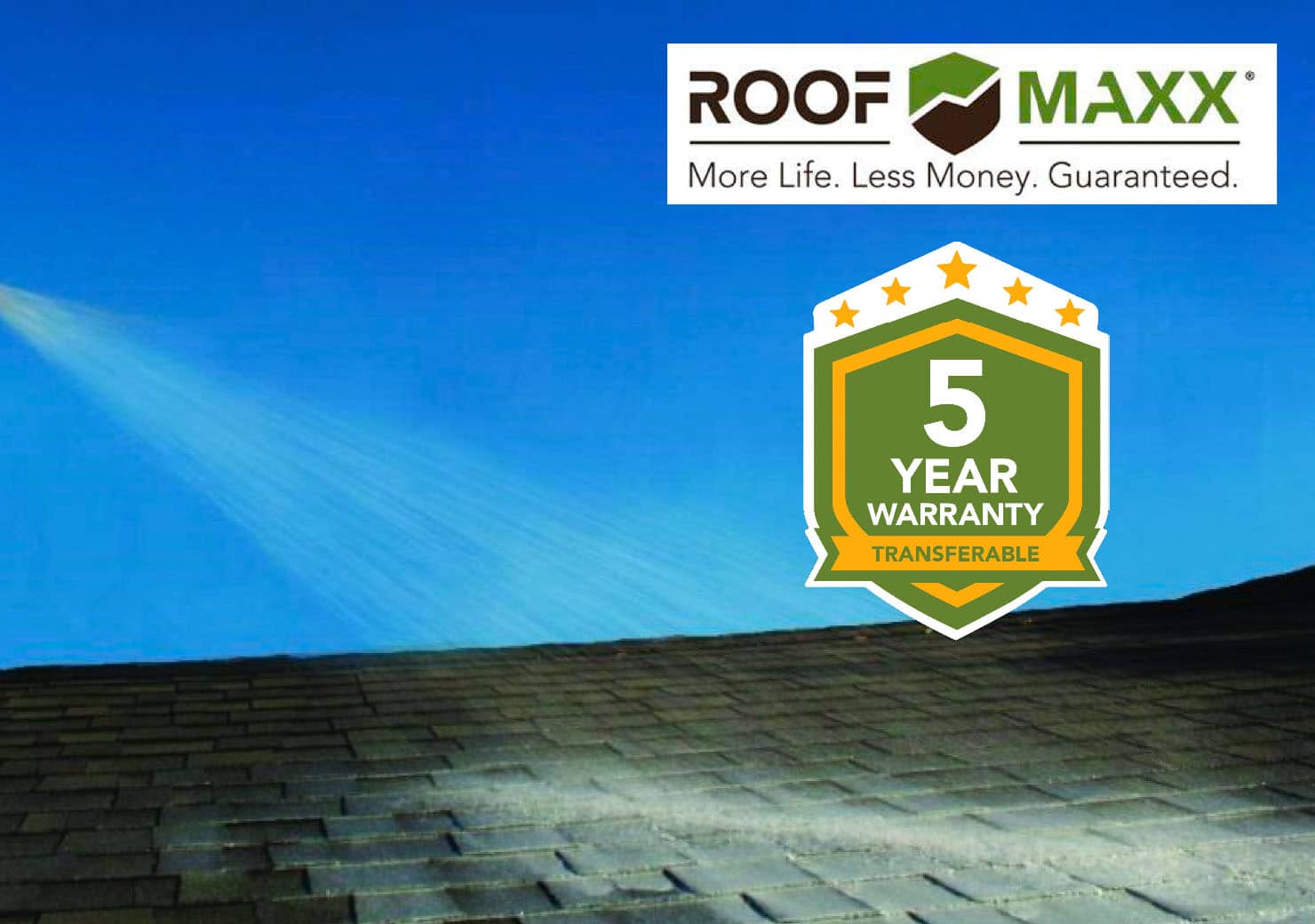In advance of Tuesday's storm, WGGB's Dan Brown talked to local experts, including AQRS Head…
Is Your Roof Doing Its Job? Here’s How To Find Out!

Is your roof still doing its job or is it a slacker? Is it keeping the water out and the heating and cooling in? Or is it just hanging around and letting the water seep in and the temperature seep out? Maybe it’s time to take a closer look at the roof that’s working for you day and night.
What are the pre-requisites for a good roof?
Your roof should be a multi-talented roofing system. Its effectiveness should go way beyond the shingles you can see on the surface. There are layers of roofing beneath the shingles that start in the attic and go all the way up to the peak. Here’s what makes your roof work properly.
- Solid decking. The structural foundation of the roof that you see when you look through up through the rafters in your attic. It’s usually made of wood or plywood.
- Leak barriers. Waterproof ice and water barriers installed along edges and eaves to prevent leaks caused by rain and ice dams.
- Flashing: Metal stripping that seals the water out from around your chimney and roof fixtures.
- Underlayment. A fire-resistant layer of protection made from felt, synthetics or fiberglass-reinforced to add waterproof protection between your roofing shingles and decking.
- Starter strip shingles: Starter strip shingles prevent shingles from blowing off during a windstorm. Sometimes metal drip edges help to manage dripping water.
- Shingles: The top protective layer on your roof that you see when you look up at your roof, available in a variety of colors and styles.
- Attic vents: Important vents allow airflow in the attic to reduce condensation, moisture, and heat from building up between your roof and interior.
- Ridge cap shingles: The final touch for protecting the peak areas of your house. Ridge cap shingles are specifically designed to fit V-shaped peaks.
- Insulation: A well insulated roof will keep the heating and air conditioning in the house where it belongs and save you money on energy!
What causes a roof to stop working?
Not all roofing systems are created equal. Some will withstand the test of time while others will just wear out. Sometimes the age of the roof or underlying factors cause a roof to underperform.
- Old age. Roofing systems have a lifespan. Shingles that are 20 years old or more start to lose their waterproofing capabilities. They tend to dry out and become dull and brittle.
- Damage. New England is rough on a roof. Hot sun, high winds, heavy snow, ice dams, algae, branches and falling debris can damage shingles.
- Second layer. Roofing over existing shingles can cause future problems when water gets trapped between the layers and causes mold, rotting or leaks.
- Poor decking. The decking is the foundation for any roof. If the wood or plywood gets wet, it can destroy the decking causing warps, rotting or leaks.
- Improper ventilation. Vents in the attic or crawlspace between your roof and your home’s interior is vital. Without proper ventilation, condensation from heat and moisture cause problems.
- Poor quality. The quality of shingles and the entire roofing system will determine how long your roof will last. Choosing the right roofer is equally important.
- Lack of maintenance. Not taking care of your roof can cause problems. Keep debris off the shingles and out of the gutters, use Roof Shampoo® to remove stains and algae, ask a roofer to check your roof for damage, leaks, and overall condition.
How do you know if your roof is working?

It’s good to do a self-inspection of your roof once a year to make sure there are no new or obvious problems. Of course, the best way to check your roof is to climb up there. However, that can be dangerous, and you should ask a roofing professional to go up if you expect something is wrong. Here is a checklist to help you inspect your roof safely from the ground. Bring a notepad and pen.
Exterior inspection from the ground
(Bring binoculars if possible)
- Walk around your yard and look for stray shingles or pieces of shingles in the grass, shrubs, or trees. Check your gutter runoff areas for shingle granules in the spouts or gutter pans.
- Check to see if there are any branches on the roof. Branches can crack or damage shingles as the wind and rain moves them around.
- Stand back and view your roof from all angles. Look for curled, cracked, or missing shingles. Look for warping, algae, and mold. These are signs that moisture may be seeping in.
- Look for fading, dark spots or bald patches on the shingles. This may mean that your shingles are drying out and losing their waterproofing capabilities.
- Try to examine the flashing. Is it tightly sealed around the chimney or roof fixtures, or is it buckled, missing, or bent? Damaged flashing could cause water to get inside.
Exterior inspection from a ladder
(For professional climbers only)
- Look for loose nails or nail heads that have popped up above the shingles. This may mean that shingles are loose and can let go on windy days.
- Check for debris in your gutters including leaves, pine needles and sticks. These could plug up your gutters and cause water to overflow to your foundation. Clogged gutters can also cause ice dams in the winter.
- Take a closer look at the flashings around your chimney and roof fixtures to make sure there are no gaps, bends or missing parts. Flashings seal the water out.
Interior inspection from the attic
(Bring a flashlight if possible)
- Go to your attic or crawlspace during the day and don’t put any lights on. Look for sunlight streaming to see if there are cracks or holes. If sunlight can get through, so can water.
- Use a flashlight to look at the ceiling for water stains, streaks, mold, or sagging.
- Look for water stains on attic ceilings, walls, floors, rafters, or insulation.
- Look for signs of leaks around chimneys, fixtures, vents, or peaks. These may include black or white spots, stains from dripping, puddles, or evidence that puddles have dried up.
Interior inspection from your living area
(Use a flashlight in dark areas)
- Go upstairs and check ceilings, walls and closets for water stains or drip marks.
- Check around chimneys to see if there are any signs of water marks or drips where the ceiling meets the chimney, or at the base where the water would drip down. Pay close attention the next time you have downpours to see if there is water trickling in.
- Go to your porches to look for signs of leaks on your porch ceilings. Water may be seeping in and getting trapped in your porch roof, which may cause mold or rot where you don’t see it.
- Go to your garage and use your flashlight to inspect the ceilings and walls in your garage for any signs of leaks.
- Go to the basement and check for water stains, mold or moisture especially around the chimney and the base of the chimney.
How can you give your roof some job security?
After your inspection, you may have to make an executive decision. If there is any indication of damaged shingles, signs of water seeping into the interior of your attic, basement or living area, it would be best to call a professional roofer to look at your roof’s job performance. Here are some of the roofing services and options available to you from Adam Quenneville Roofing & Siding.
- Roof repair: If your roof isn’t that old, repairing it may be an option for shingles, flashings, and repairable roofing issues.
- Roof tune-up: Regular roof maintenance is important to keep your roof in working order. Ask about a roof tune-up which gives your roof the once-over to eliminate potential problems.
- Roof replacement: If your roof is 20+ years old, it may be time for a roof replacement. Adam Quenneville Roofing & Siding has years of experience, a proven track record and we use only quality roofing products like GAF® shingles.
- Financing: Ask about 100% financing so you can set up a comfortable payment plan.
- Roof Maxx®: Think you need a new roof? Think again. You may need Roof Maxx®. It’s is a soy-based environmentally safe application that adds 5 to 15 years of life to your shingles, guaranteed.
- Roof Shampoo®: If your roof is stained or has algae and/or moss problems, Roof Shampoo® may be all you need to make your roof look almost new again.
- Unmatched Warranties: Warranties on roofing products and installation vary from contractor to contractor. Adam Quenneville offers some of the best warranties in the industry.
- Free estimates: The bottom line for repairs or replacement is price. Ask for a free estimate.
Don’t fire your roof, hire a roofer!
If your roof is not doing its job, don’t let it go! Contact Adam Quenneville Roofing & Siding to give your roof the job security it needs. Adam Quenneville Roofing & Siding is a name you can trust to install the best quality roofing system at the best possible price with unmatched warranties and 100% financing. Whether you need repairs, a roof tune-up, Roof Maxx®, Roof Shampoo®, or a total roof replacement, Adam Quenneville Roofing & Siding will make sure your roof is doing the job it was intended to do. Need our professional opinion? Ask for a free estimate and put us to work!
Blog by Deborah O’Neill



